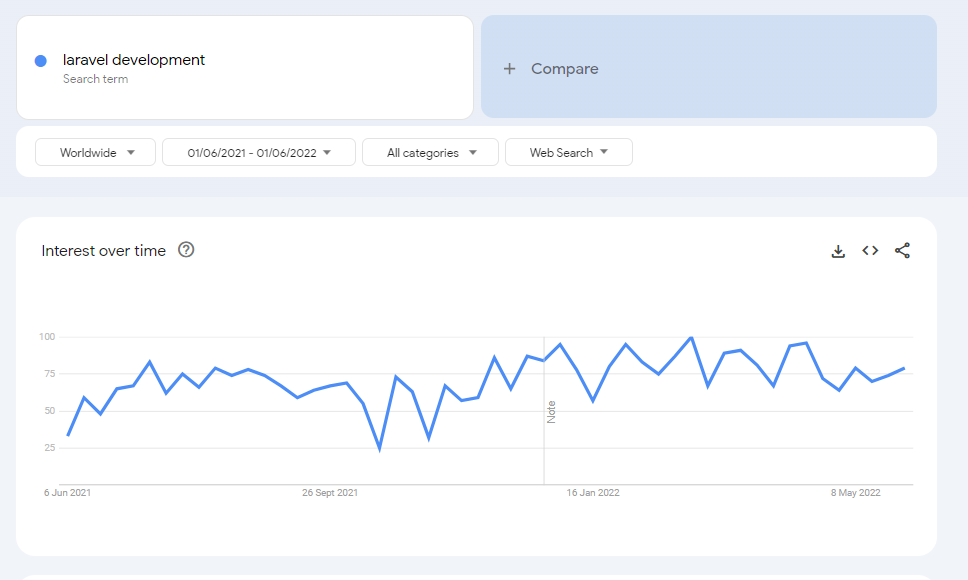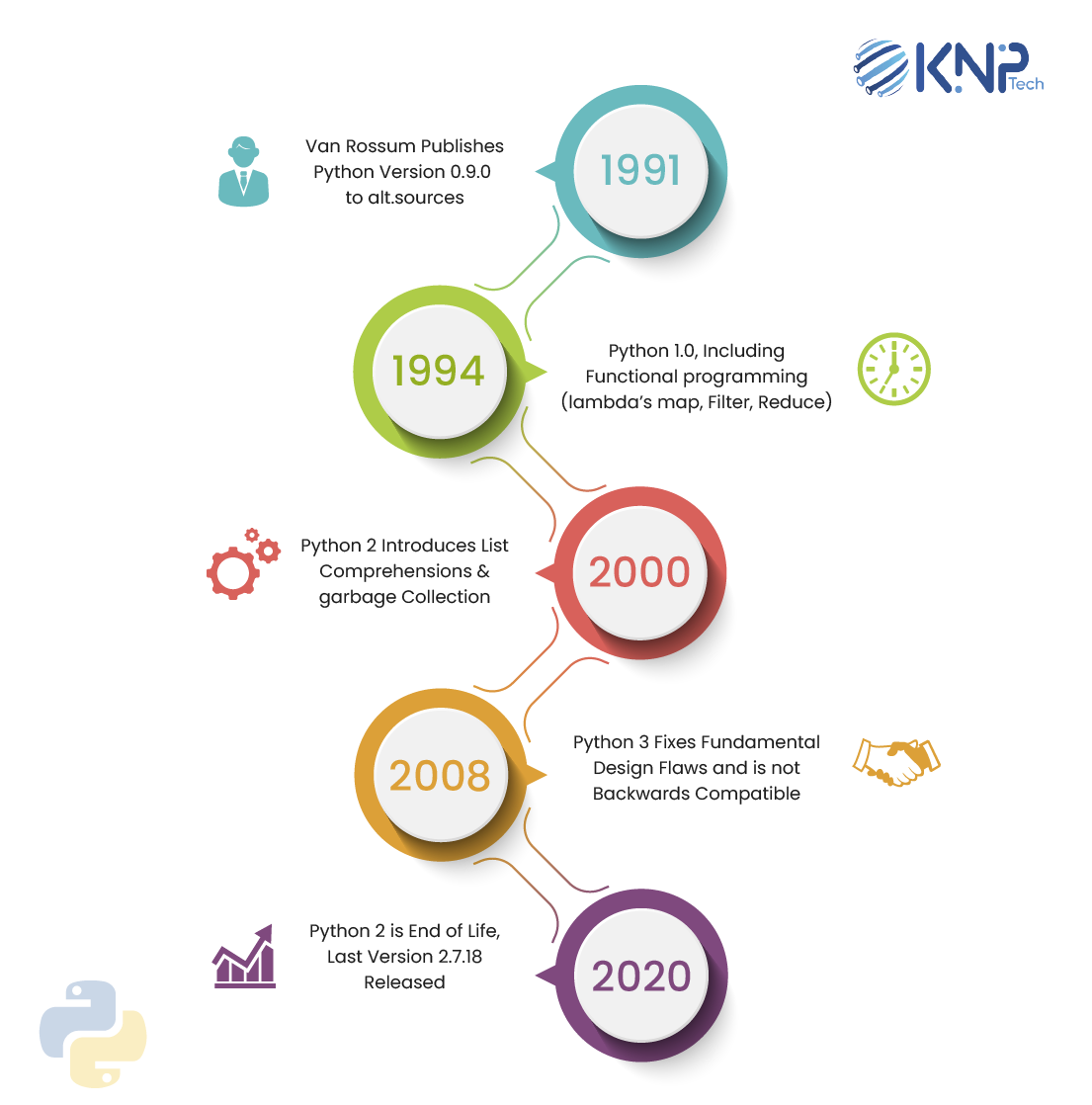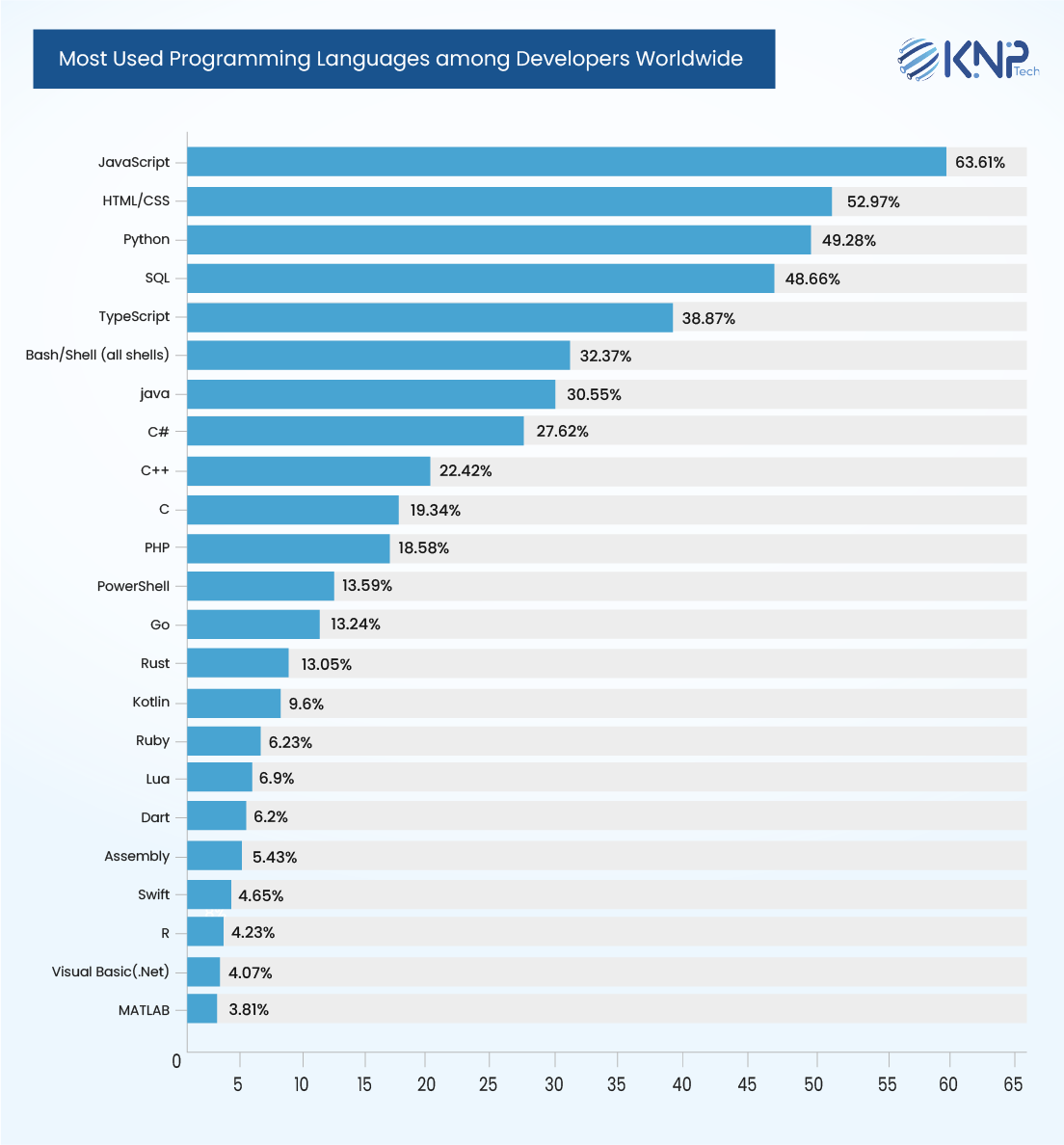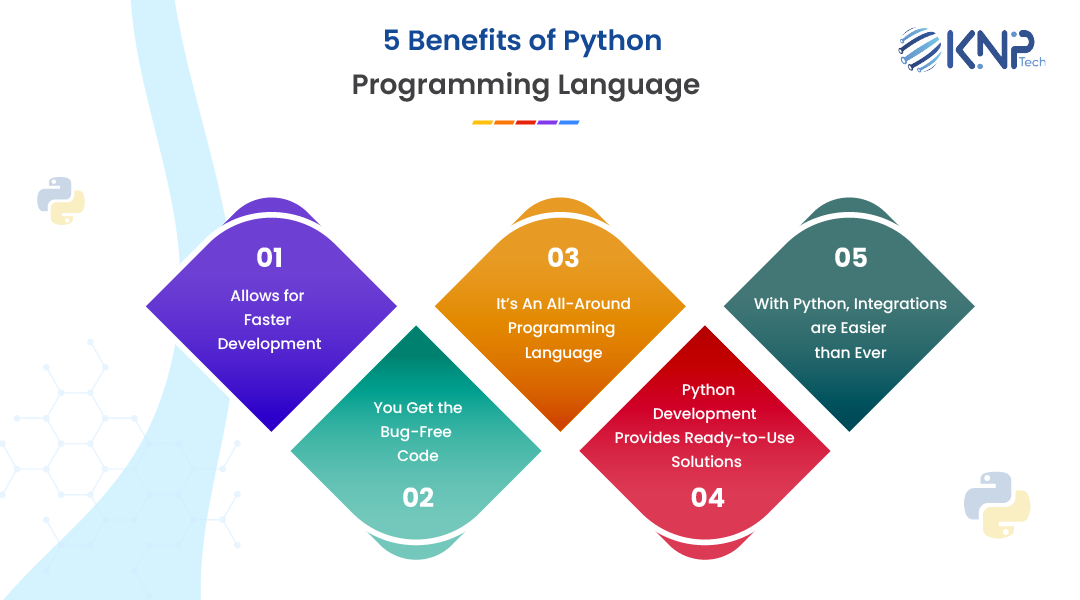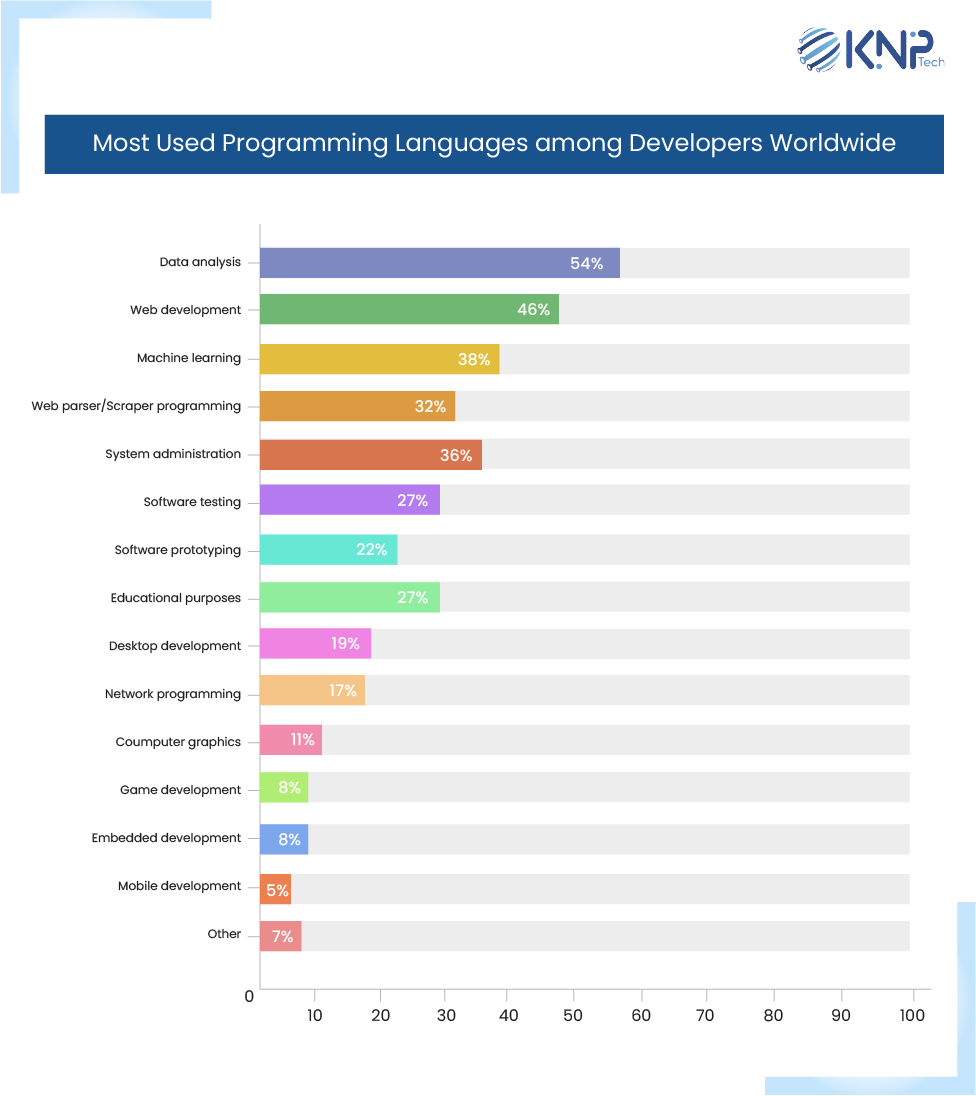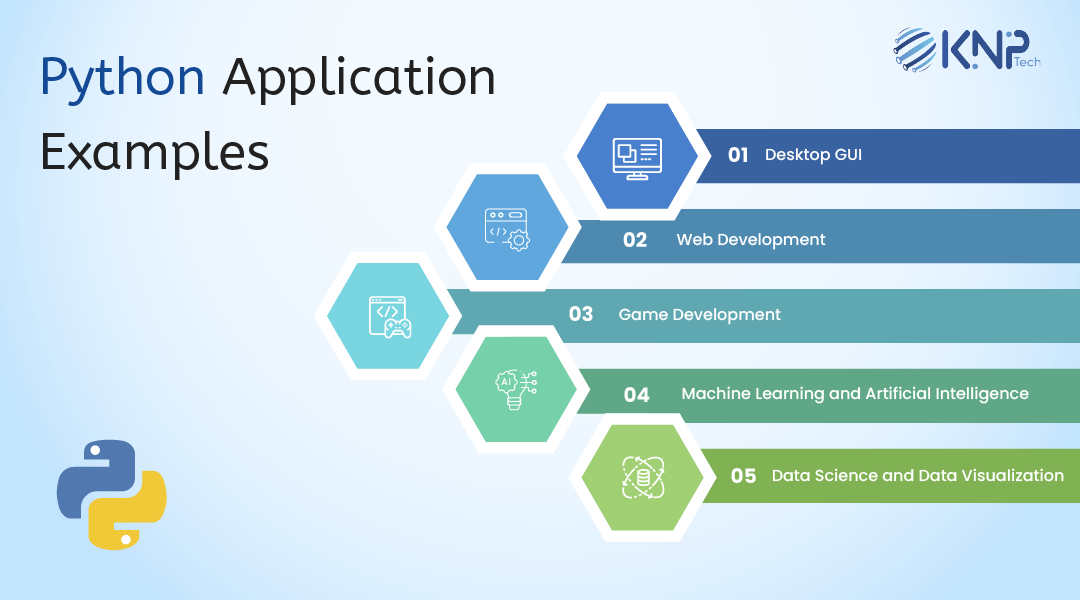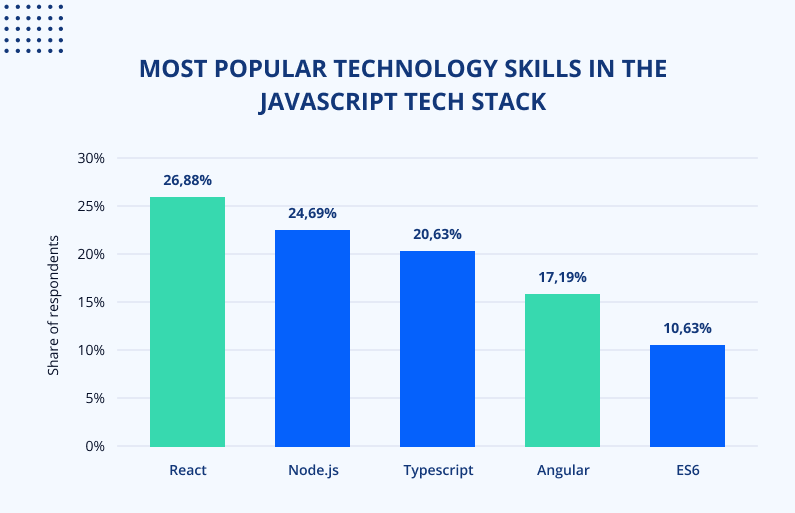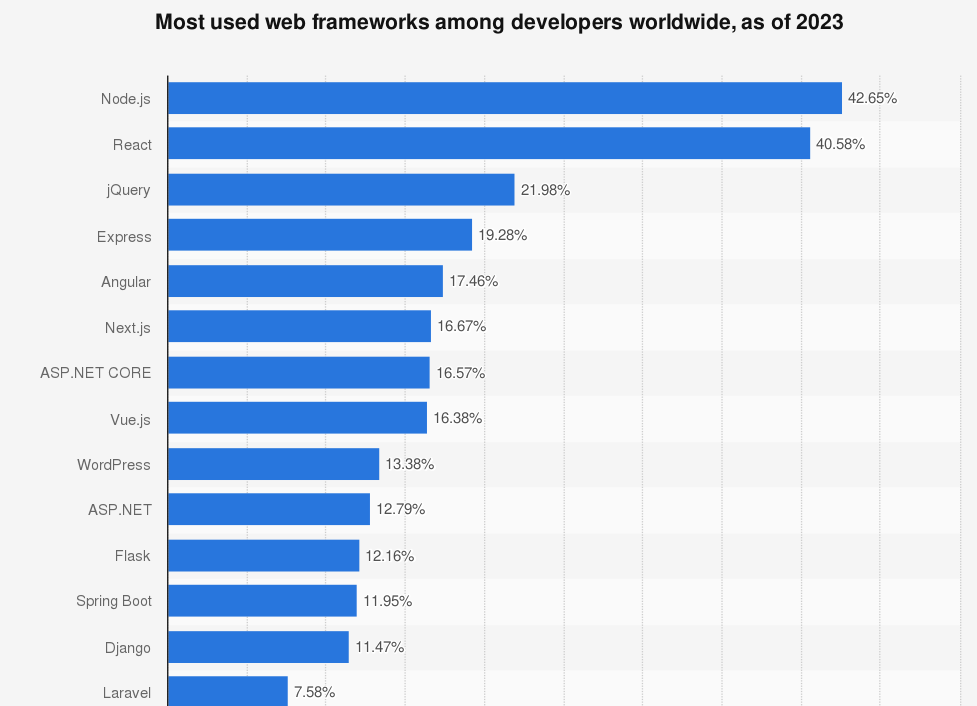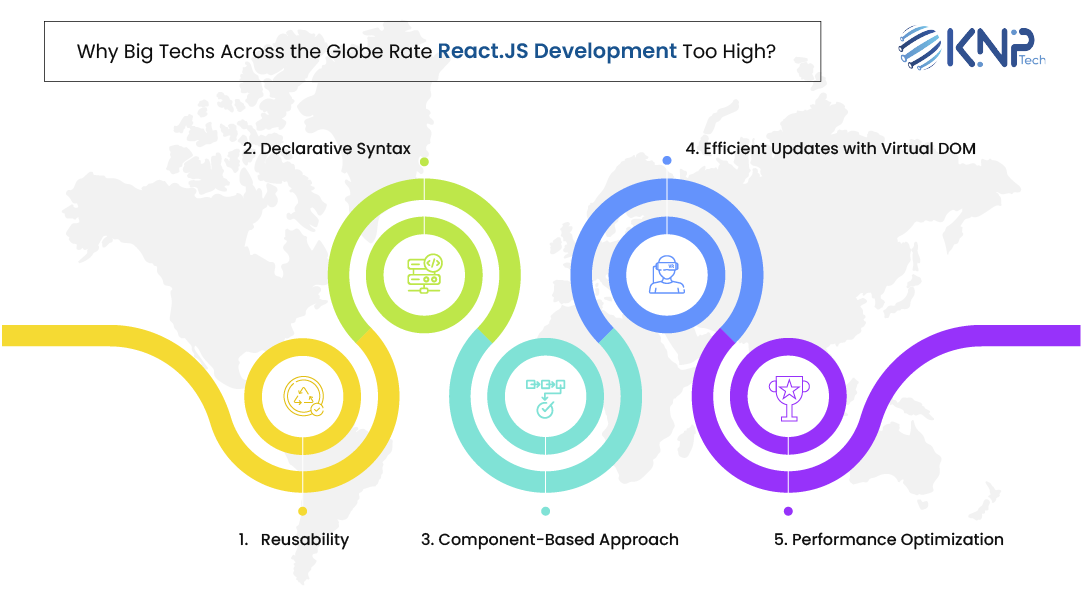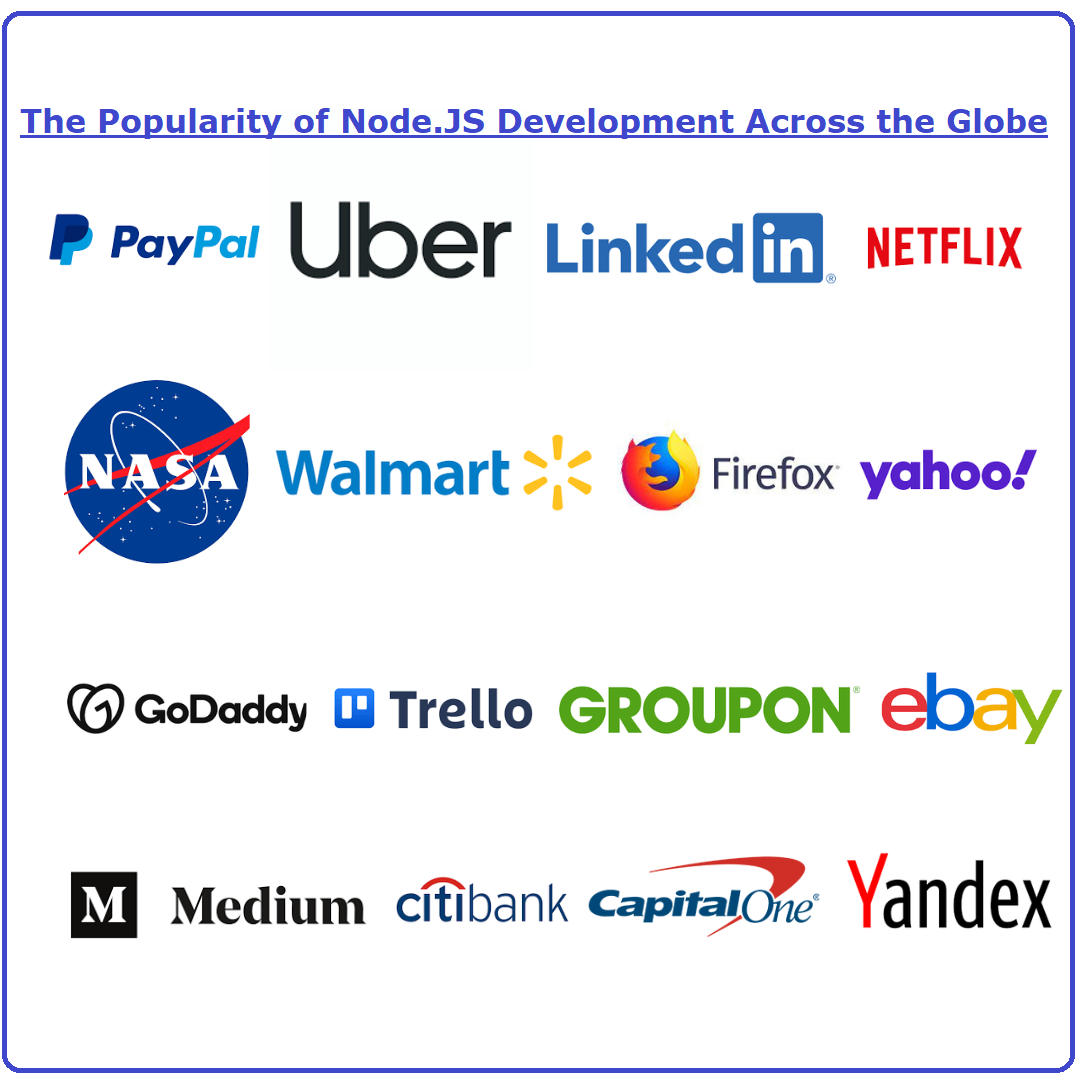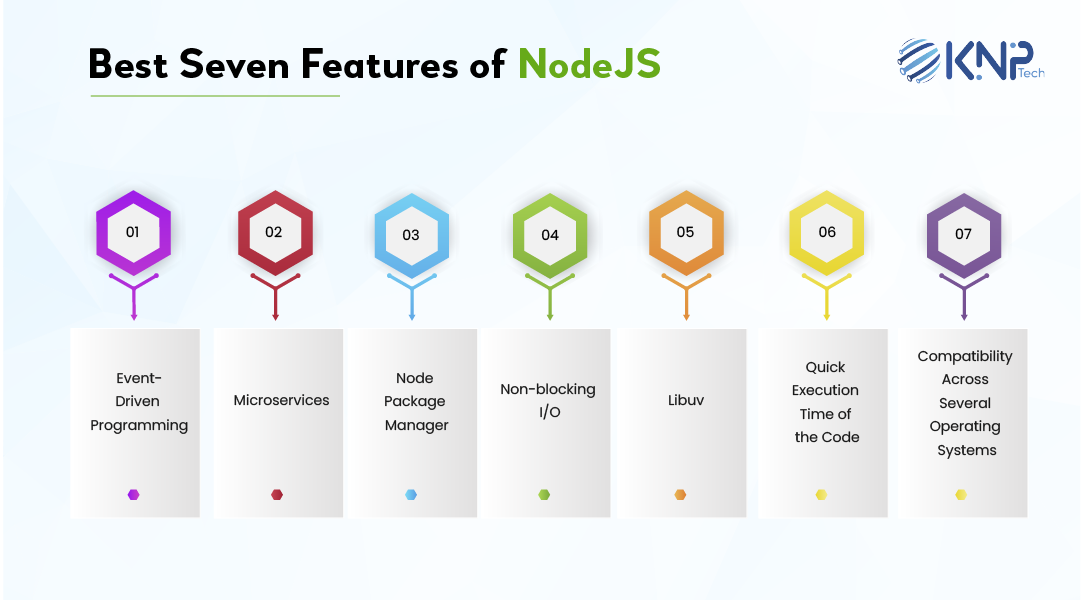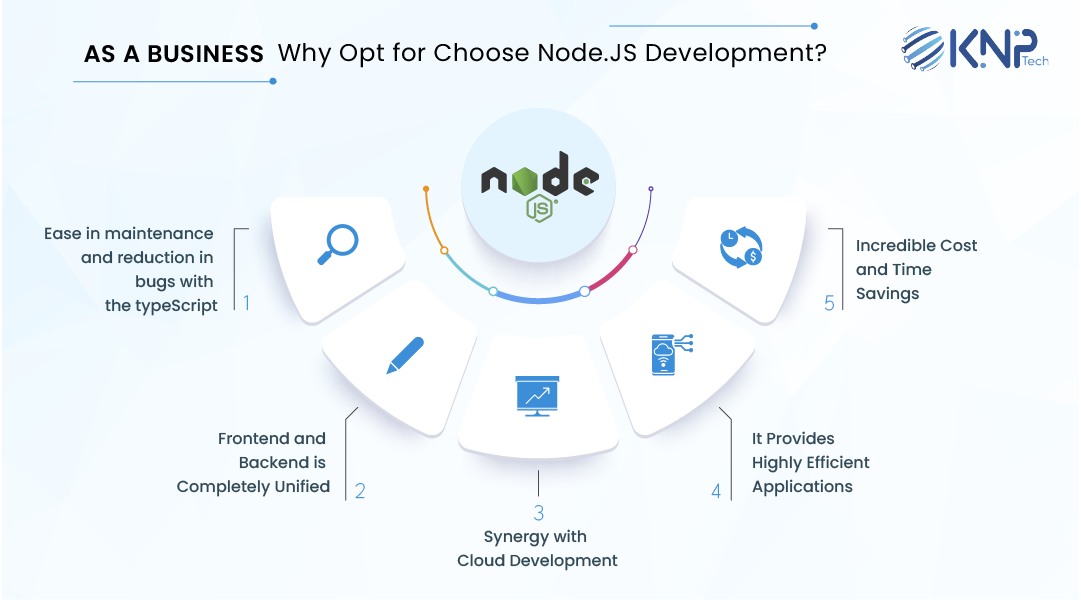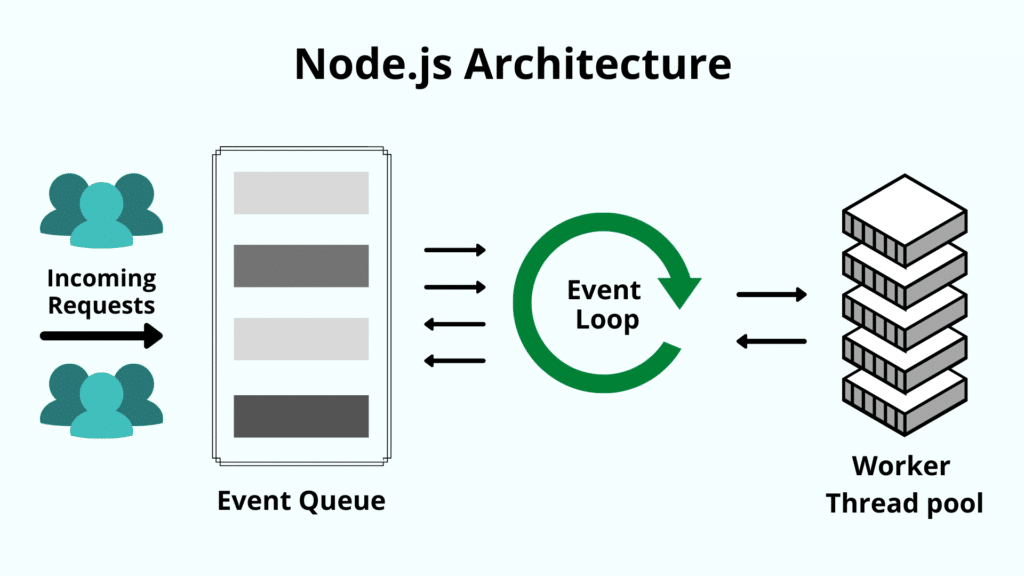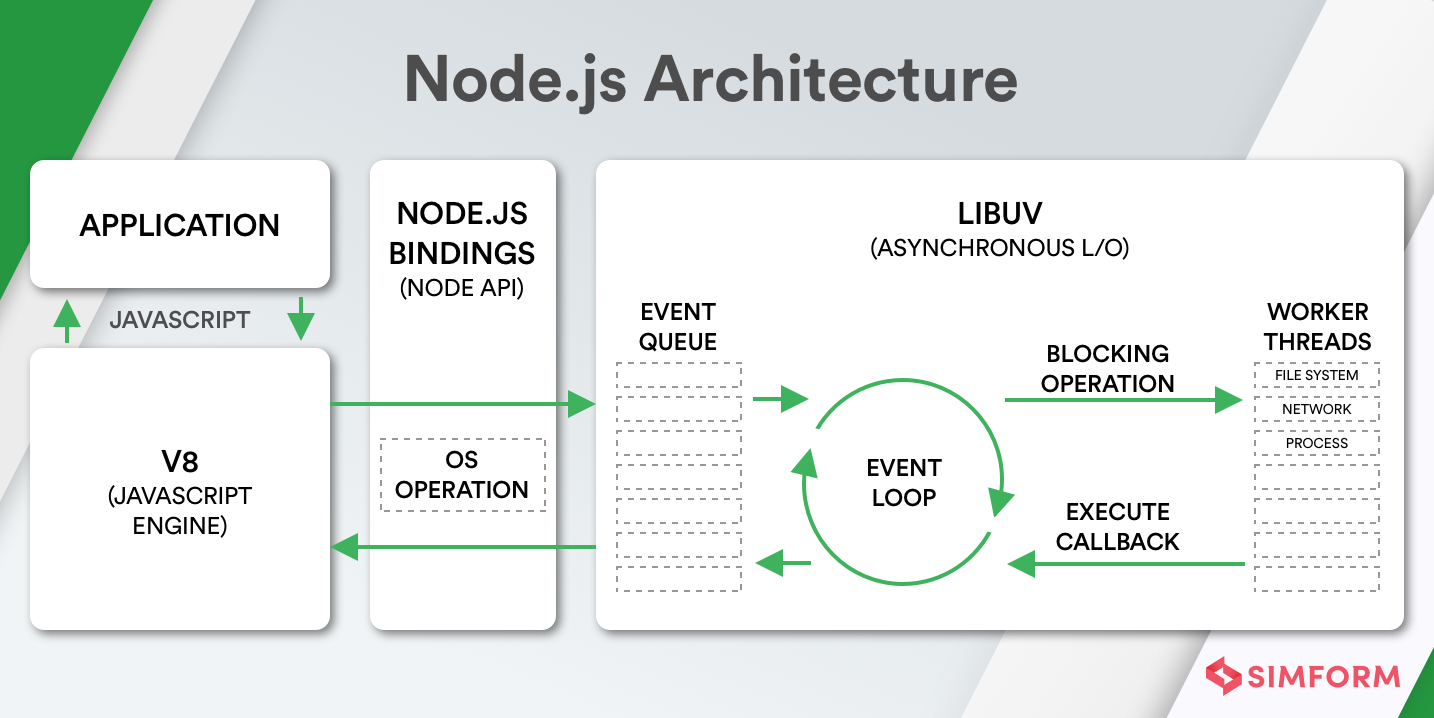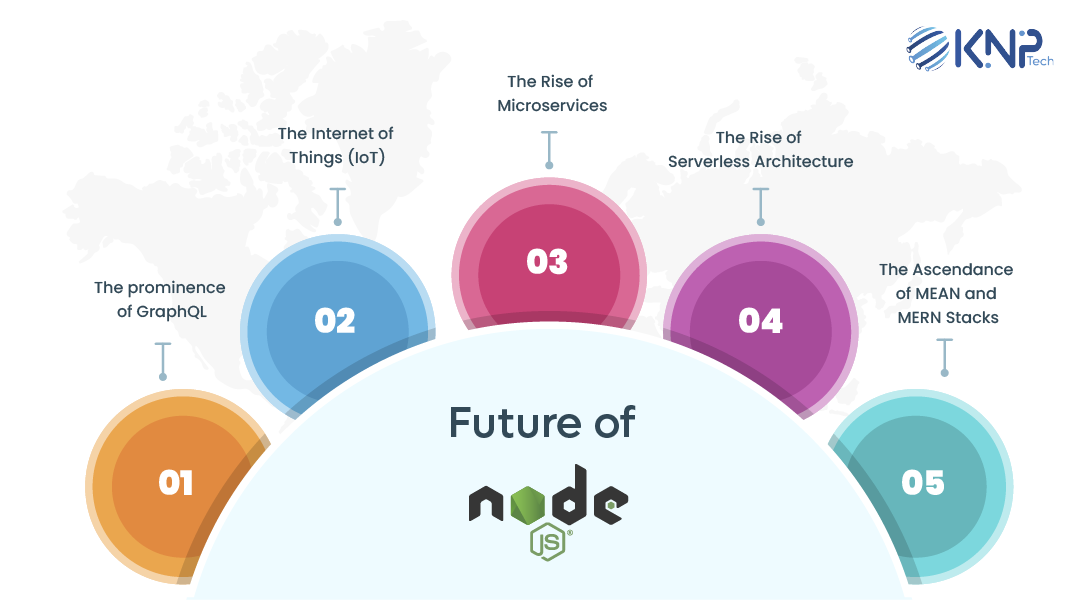Look at this chart posted below before we start giving you any other nodeJS app examples.
This is Stack Overflow’s 2022 Developer Survey, where 46.31% of developers have chosen Node.JS as a popular web framework for Web app development. Maybe that itself is proof for best node js apps.
Not only this, a number of companies (among the Fortune 500), including GoDaddy, Twitter, NASA, Trello, PayPal, LinkedIn, Walmart, Uber, Yahoo!, and eBay, achieved significant improvements with the use of Node.JS.
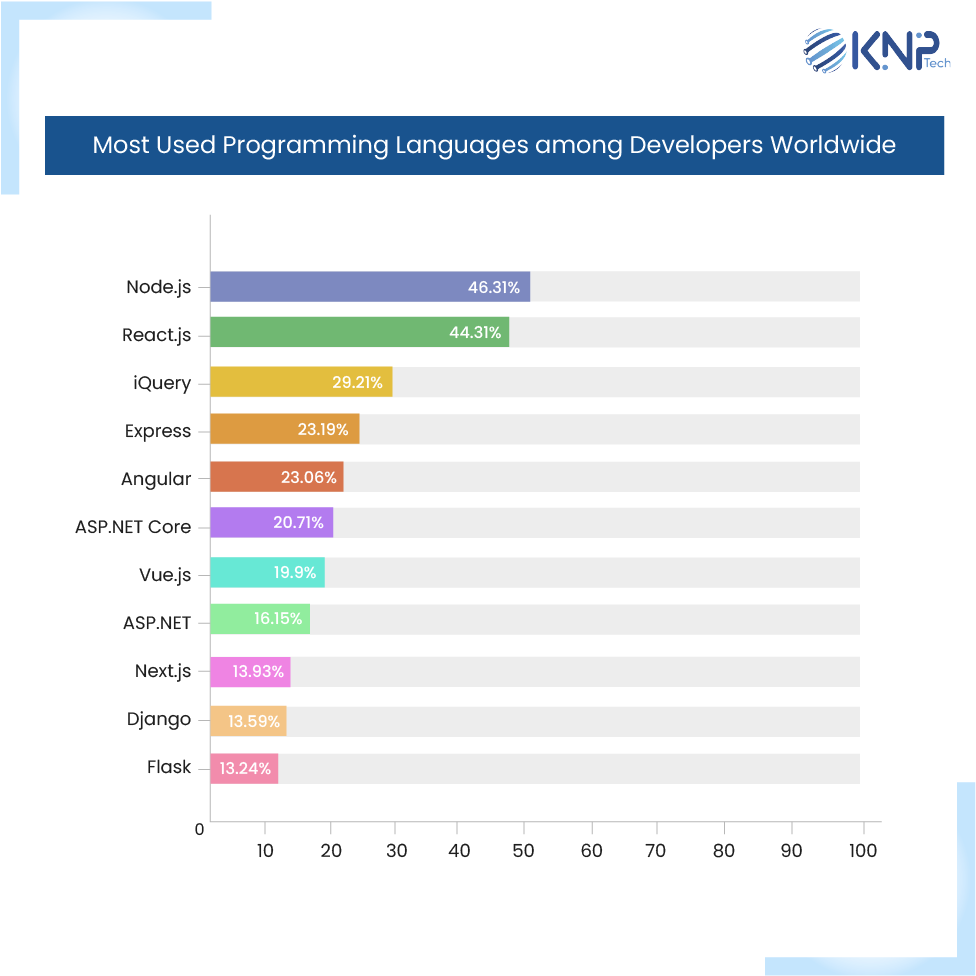
While we will be talking specifically about the best node js apps and node js applications examples – here are the core reasons why famous companies use Node.js apps.
Why is Node.JS too Popular Among the Top Companies?
Node.js has emerged as a solution for production challenges faced by top companies. These challenges revolve around both the platform itself and optimal resource utilization. Prominent companies like Netflix, PayPal and Linkedin have openly acknowledged that they achieved reductions in loading times by up to 60%, thanks to Node.js.
Interestingly, Speedtest.net, a recognised tool for measuring internet speed, is developed using Node.js. Companies leverage Node.js applications for reasons with some of the common ones being enhanced developer productivity, cost-effective development processes, and improved performance of applications.

Top 7 Node.JS Real-Time Applications Examples
Talking about node js applications examples – Numerous companies have embraced Node.js, a recognized and extensively utilized technology to fulfill their production requirements. When it comes to real-time applications, it is the choice for scalability. Node.js excels in developing mobile applications with performance.
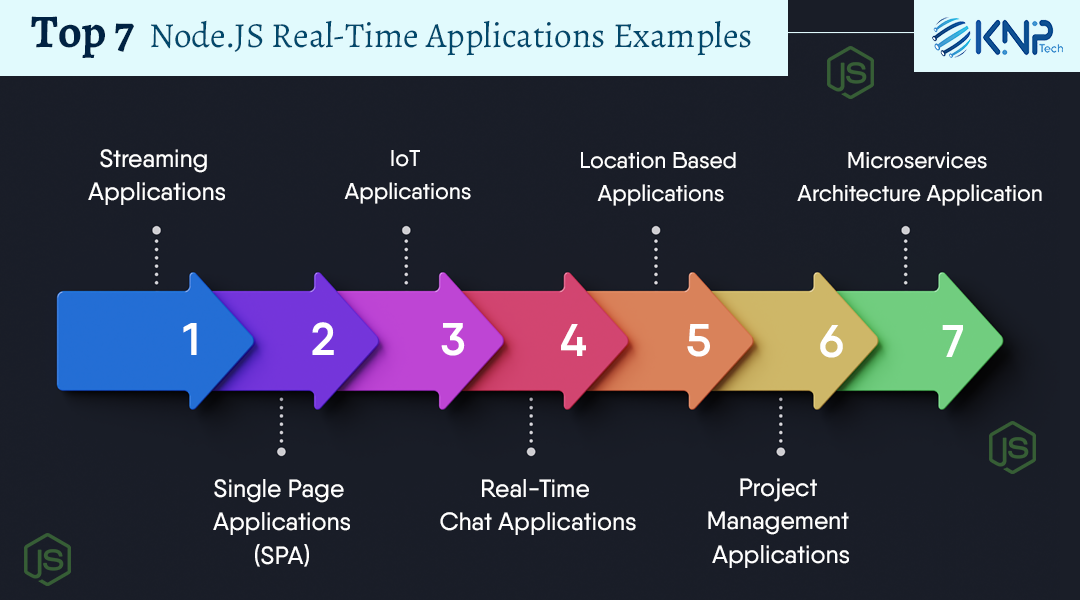
Prominent players in the industry, such as Yahoo! Google, and Microsoft, are among its users.
1. Streaming Applications
Streaming applications offer the convenience of downloading components without burdening the server or your local computer. To initiate the computer, you need to acquire program elements. Subsequently, it allows for the download of components on demand while maintaining a connection.
Node.js is particularly well suited for streaming applications due to its Stream API, which simplifies these processes.
When creating applications for streaming, Node.js is the way to go because:
• You can operate and monitor it effortlessly because of its user-friendly interface.
• Initiate a server request inside the streaming application to store data.
• Using a variety of server events, you may improve your localized software with little data traffic.
• It uses the Node.js event loop, which makes it easier to synchronize client and server Node.js applications to reduce delays.
Netflix
Netflix heavily relies on data as it dominates the streaming media market and prioritizes video content. To ensure its subscribers enjoy personalized experiences, the platform utilizes A/B testing. Node.js was selected due to issues related to dependencies and app scalability. App startup time was reduced by 70% due to this update.
Other examples include Apple Music, Spotify, YouTube TV, etc.
2. Single Page Applications – SPA
Talking more about node js applications examples, next is SPAs.
A technique in web development called a “single page app” (SPA) allows for creating web applications. Despite being different from websites, SPAs offer users an enhanced experience with desktop applications.
They are widely used for building types of applications such as networking platforms, online text editors, and drawing tools. A known example of an SPA is the email service Gmail. Additionally, Node.js has gained popularity on social media platforms like Medium and LinkedIn.
When it comes to building SPAs, Node.js is the way to go because of its:
• Strength to manage data-intensive tasks and asynchronous requests
• Several client requests may be “postponed” by an event loop at the same time.
• Keeps views and updates flowing smoothly
• The Node.js framework and the browser both use JavaScript as their language of choice.
Consequently, developers may effortlessly use the same language structure and data on both sides, and there is less need to switch contexts between them. Your one-page applications may be developed and maintained more efficiently with this capability.
LinkedIn chose to utilize Node.js to improve its service as they are a social network focused on business and employment. They have recently transitioned to using Node.js for the backend of their app, even though it was still a new technology at the time.
This decision proved to be beneficial for the company in the run. As a result, the new software appears to be significantly faster and lighter compared to its predecessor, with speed improvements ranging from two to ten times. Kiran Prasad, LinkedIns head of development, attests that the development process was notably swift.
Other examples include Gmail, Google Maps, Twitter, Github, Airbnb, Google Drive, Netflix, etc.
3. IoT Applications
To enable the exchange of information between devices and the cloud, the concept of the Internet of Things (IoT) has been developed. It allows devices to communicate with each other, but managing data transmission and requests from millions of devices presents challenges in controlling data flows.
This is where Node.js excels by handling requests simultaneously. As a result, businesses have preferred it over alternatives for more than a decade.
The main arguments in favor of Node.js among developers as opposed to C++, RUBY, and others are as follows:
• Effortless pairing of Internet of Things protocols
• Guarantees that information is safe
• Its plug-ins facilitate the expansion of the Internet of Things.
Other examples of the IoT-based apps include Nest, Philips Hue, Fitbit, Google Home, Amazon Alexa, etc.
Skycatch
Here’s a simplified Node.js application example that helps manage data. Using Node.js, the Skycatch IoT Projects can identify machine behavior, enabling accident prevention. Its primary purpose is to enhance process quality and maintenance frequency by comparing equipment performance against criteria, thereby reducing device failures.
Node.js based Internet of Things (IoT) applications, like Skycatch, store world information. By utilizing powered data drones, physical objects can be instantly transformed into replicas.
4. Real-Time Chat Applications
Real-time chatting has wholly altered the manner in which we interact by making it possible for people to connect via the transmission of text, voice, and video discussions. Platforms such as Whatsapp, Facebook Messenger, and other popular chat applications are now a part of the media and large commercial websites, and they play an essential role in a variety of industries.
Among the frameworks available, Node.js stands out as one that provides all of the functionality necessary to construct sophisticated real-time chat tools. On top of that, it has an Event API that makes the process of creating emitters much easier. These emitters are responsible for sending out events on a regular basis, which event handlers are able to listen to.
In order to function correctly, a significant number of real-time applications and instant messaging services are dependent on server-side events such as push notifications.
Using its WebSockets protocol, Node.js makes it easier for users and servers to share data in real time with one another inside the framework.
WeChat is a well-known social networking and messaging software that has one billion users all over the globe. It is possible to use it to read the news, play games with other people, access local services, talk and phone with your friends, and carry out a variety of other activities. From inside the confines of the Node.js framework, it does all of these and more.
Other examples of real-time chat applications include WhatsApp, Facebook Messenger, Snapchat, Viber, Hangouts by Google, etc.
5. Location Based Applications
The sort of app that is now the most popular is the navigation app. It is also possible to construct a location-specific application with the assistance of Node.js, which enables users to locate their preferred destination in close proximity.
The following are examples of location-based applications created using Node.js:
• Perfect for those who run businesses
• An asynchronous functioning
• The capability to provide updates in real-time
Google Maps
Node.js is used by Google Maps, which has a prestigious place on the list of mapping and navigation applications.
Other examples of location-based apps include Yelp, Zomato, Uber, Rapido, and more.
6. Project Management Applications
Many people rely on project management software to effectively organize and monitor their work in a location. Choosing to develop a project organization application using Node.js offers benefits, which is why many tech companies favor it. Prominent collaboration tools such as Slack, which facilitates team communication, and Trello, which assists with project management, are built on the foundation of Node.js.
There are reasons why developers opt to develop applications using Node.js;
1. It provides a workload management system.
2. It facilitates collaboration helping teams effectively track their project timelines.
3. Creating servers with Node.js ensures communication with users without any performance glitches.
Trello
An excellent example of a Node.js application is “Trello.” The engineering team behind this project management tool leveraged the benefits of the Node.js stack. By utilizing push notifications, they ensured updates and real-time collaboration within the platform. This means that all users have access to a consistent representation of the application.
Due to its blocking architecture, they could utilize Node.js for tasks like spreading updates and managing ongoing connections.
Other examples of project management applications include Jira, Asana, Basecamp, ClickUp, Notion, Monday.com, and more.
7. Microservices Architecture Application
In times, the microservices architecture has become increasingly popular with known applications, like Netflix, Facebook, eBay, PayPal, and Amazon adopting it. These systems have evolved from programs.
The following characteristics define microservice architecture;
• It allows applications to be developed as modular programs.
• Each role in the system performs a function.
PayPal
PayPal is an example of a company that uses Node.js for its microservices. PayPal is one of the most used online payment platforms globally and has leveraged Node.js to enhance its application stack since 2013. This adoption has enabled teams to work on projects simultaneously. Node.js is now utilized in developing the user-facing content component of PayPal, replacing a Java-based application. The new version built on Node.js has 40% files and 33% fewer lines of code while being twice as fast as its predecessor.
Other examples include Spotify, Airbnb, Etsy, Twitter, Square, Uber, LinkedIn, etc.
Wrap Up
We have now covered all the node js real-time applications examples. You can check for more of the Node.js projects and apps that are known to have been built utilizing this technology. Picking the right development partner for your JavaScript project ideas is crucial if you’re thinking about making a Node.js app.
When working on Node.js projects, KNP Technologies gives you the opportunity to choose the framework.
In order to make sure your vision is wholly realized, our committed team will be there for you from the very beginning of the project all the way through product development.
FAQs
Why Majority of Developers use Node.Js?
Many developers often choose to use node.js when building applications and servers that prioritize non-event-driven operations. This preference is primarily due to its threaded design and its capability to handle fundamental time-push architectures effectively. Moreover, it proves to be highly efficient in developing backends and APIs for web applications.
Can you provide examples of real-time apps created using Node.js and explain how Node.js is crucial to their development?
The combination of the event-driven paradigm and non-blocking I/O makes Node.js a great choice for applications that require real-time capabilities. It is well suited for purposes such as chat apps, gaming portals, collaboration tools, and streaming platforms. With Node.js, handling connections simultaneously becomes effortless.
Is it possible to build enterprise-grade apps using Node.js?
Yes, Node.js truly excels in applications tailored for businesses.
What are the most important factors to consider while working on a large Node.js project?
Key elements to take into account for projects involve organizing code into modules, adopting a microservices architecture, implementing load-balancing techniques, and utilizing caching mechanisms. When it comes to handling connections happening simultaneously, Node.js offers advantages in terms of speed and scalability.



